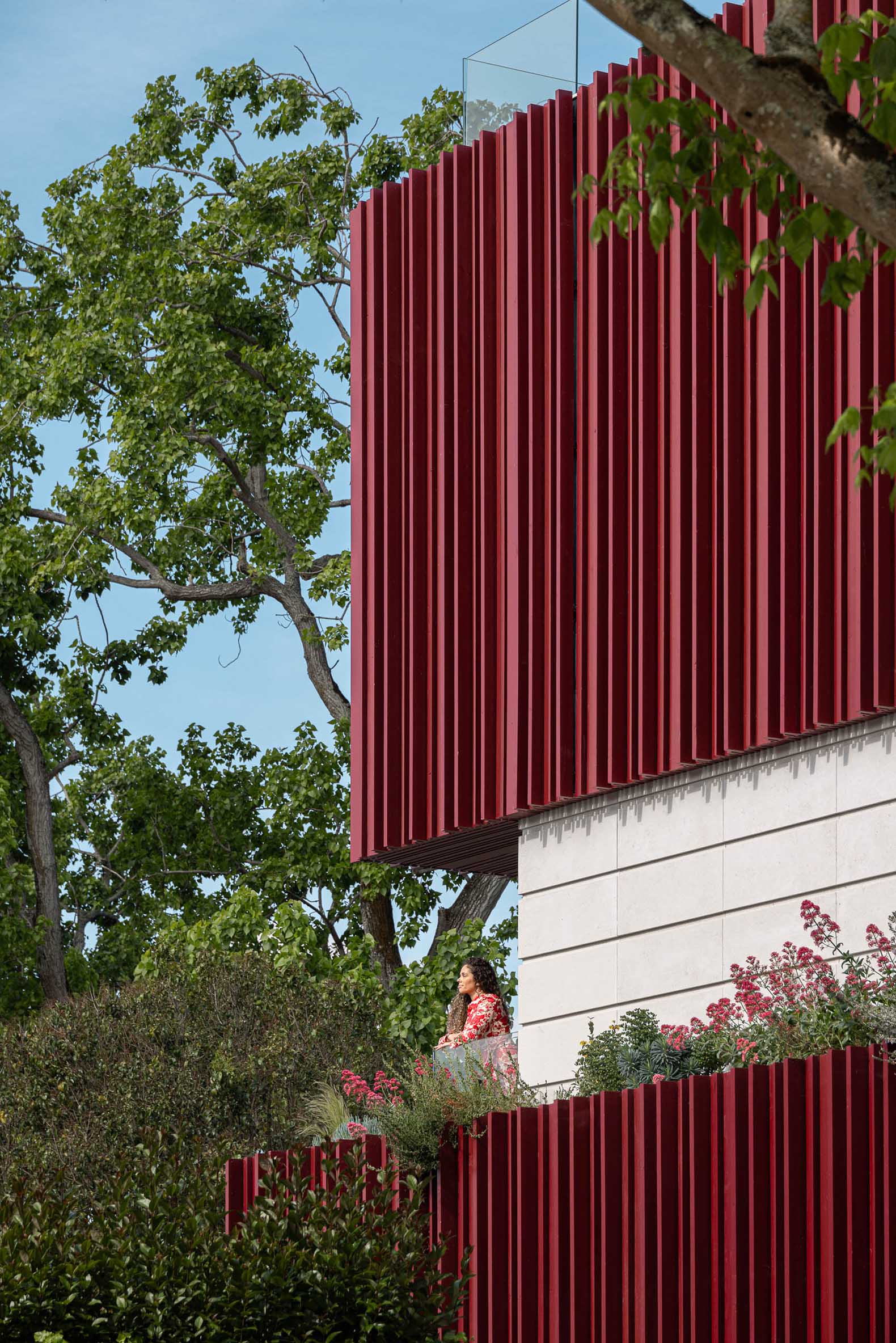Paulo Martins pays attention to the site's history and gives a sustainability answer using CLT wood in its interior structure and new red façades. Its stony main façade intertwines past and present in a harmonious celebration of architecture and local history.
Inside, the program is organized around a staircase that allows light to flow from the roof to the ground floor, through an inside completely white. The basement is carefully treated to ensure that it does not feel like an underground floor, but rather like a space filled with light.

The Park House by Paulo Martins. Photograph by Ivo Tavares.
Project description by Paulo Martins
The Park House is located on a quiet, central street in the city of Aveiro, facing a natural, tree-filled area, the city park. It emerged from the alteration and expansion of a deteriorated Art Nouveau building constructed in the 20th century. The facade features various plant, animal, and human elements carved in limestone, whose architectural and historical value was essential to preserve, thus guiding the material and formal character of the rest of the intervention.
Respecting the memory inscribed in the building's original skin, the Park House unfolds towards the city's green heart, as if it was carved directly from the essence of the old facade. Its stony body, extruded from the original facade and carved by wooden slats, cuts through space creating a visual narrative that celebrates the passage of time, with lines and shadows dancing to the rhythm of the years.
Constructed with the soul of wood (CLT), the house is organized over four floors: a garage and workspace on the basement floor, as an invitation to introspection and reflection; social spaces on the ground floor, inviting gatherings and sharing; the upper floors house four suites, and finally, crowning the structure, a terrace that offers 360o view over the city.












































































